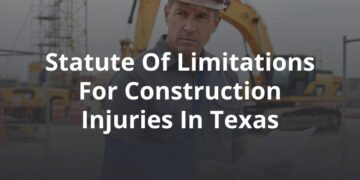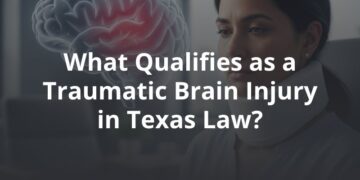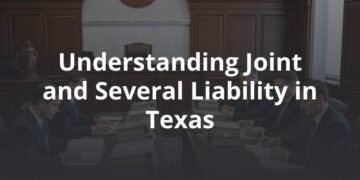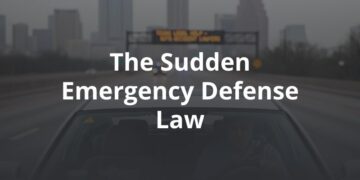Austin traffic may be getting worse and worse, but you’d never know it from police traffic citation statistics. According to the Austin American-Statesman, the number of issued traffic tickets dropped 30 percent in 2018, prompting many residents to wonder why, particularly given the city’s poor record for traffic fatalities. Although it’s difficult to point to any single cause, there are several factors that may have contributed to the shift. Here are a few potential explanations.
The Number of Traffic-Related Deaths Has Decreased
While it may seem surprising, considering how frequently we seem to hear about fatal accidents in the news, the number of traffic-related fatalities in Austin has actually been on the decline. A 2016 City of Austin initiative aimed at reducing collision fatalities, dubbed the Vision Zero Action Plan, may be responsible for that.
Some experts hypothesize that a decline in traffic deaths may be to blame for the reduction in citations. However, when you look at traffic fatalities by type, the numbers paint a disturbing picture. Pedestrian-related deaths are on the rise; in 2018, pedestrian deaths comprised 42 percent of all fatalities, compared to 30 percent in the previous year.
Studies show that crashes involving pedestrians are much more likely to be fatal when cars are traveling at higher speeds. Speeding is also a key factor in about a third of car accidents, according to research from the National Transportation Safety Board. Given that correlation, it’s odd that the Austin Police Department would cut back on speeding citations, since catching speeding early could go a long way to meet the city’s objectives. It seems unlikely that the APD would roll back a successful program like Vision Zero just when it was starting to breed results.
Austin Police Requirements Have Recently Changed
Another reason police have cited for this year’s steep drop in citations is a recent change in traffic enforcement requirements. Prior to 2018, APD was the recipient of a Texas Selective Traffic Enforcement Program grant, which provided funding to pay officers working overtime in the city.
Ordinarily, police are required to stop traffic offenders every 20 minutes, but not necessarily issue a ticket. The grant stipulated that overtime officers must write a new traffic citation every 20 minutes. But that funding—and the requirements that came with it—ended at beginning of 2018. That fact alone could explain the drop in the number of citations, since it’s obviously easier for police to issue a warning than a citation. And with less funds for overtime pay, there may simply be fewer officers on the road at any given time, which doesn’t bode well for traffic accidents and injuries.
Growing Cities Throughout Texas Have Seen Reductions
Austin isn’t the only city to witness a recent drop in traffic citations or experience an issue with collisions. Fort Worth, San Antonio, Houston, and El Paso have echoed the trend among their respective law enforcement agencies. One factor that might explain reductions across the state is population growth.
Austin’s surging population is plainly evident; studies show that our city is one of the fastest growing in the US, with experts predicting that we will reach one million residents by 2020. That trend is not limited to the capital of Texas, however. In 2018, census data showed that the Lone Star State added more new residents than any other state in the nation.
Those extra residents could be placing a strain on Texas police departments. With a lower officer-to-resident ratio, police may be mere shifting their priorities to address more urgent crime first.
Additionally, it’s worth noting that it has been a turbulent year for the APD overall. In November, a two-year standoff between the Austin Police Association and the City of Austin finally ended in a tentative agreement that addressed bonuses, promotions, and stipends for officers with extra training and skills.
That’s good news for police officers since they have been without these payments since the end of 2017, when the Austin Police Association contract last lapsed. Additional stipends for overtime pay were also affected by the contract ending, placing additional strain on Austin police.
Whether or not these negotiations will breed any results for traffic enforcement remains to be seen. In the meantime, however, conscientious drivers should follow these guidelines to avoid unsafe scenarios.
- Give yourself extra traveling time to avoid the temptation to speed.
- Pay attention to the road and try to minimize distractions from cell phones.
- If you naturally tend to speed, aim to drive a few miles per hour under the speed limit.
- Give yourself room between you and the car ahead of you to limit damage in the event of a collision. The rule of thumb is one car length for every 10 miles per hour, so if you are traveling 50 miles per hour, you’ll need to give at least five car lengths.
Remember, with fewer police issuing citations, it’s up to you to keep yourself safe. If you have already been the victim of a collision, though, our firm can help you handle the legal aspects. Contact us today to discuss the details of your case and learn how to put yourself in the best position to be compensated for your injuries. We can help you reach your destination — without the traffic jam.






